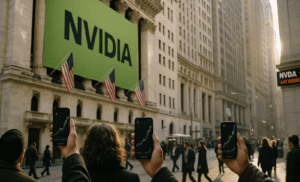On International Workers’ Day, while much of the world honors laborers and their struggles, American workers are witnessing a steady erosion of the very rights this day celebrates. From weakening union power to legislative barriers and unsafe workplaces, labor protections in the United States are under significant strain.
Union membership has reached a critical low. According to the U.S. Bureau of Labor Statistics, only 11.2% of workers were union members in 2023, despite growing public interest in organized labor. The private sector saw a modest gain of 250,000 unionized workers, yet this was offset by a sharp decline in public sector unionization—down by over 50,000 members.
Experts warn this trend has weakened collective bargaining, stalling improvements in wages, health benefits, and job security. “We’re seeing a growing interest in unions, but legislation and corporate pressure are creating steep obstacles,” said labor economist Dr. Rachel Linden of Georgetown University
Federal Rollbacks: Policy and Politics Collide
Federal actions under the Trump administration have drawn fire from labor unions and watchdog organizations. The Department of Government Efficiency (DOGE), led by Elon Musk, has introduced sweeping reorganization plans that led to deep staffing cuts across essential federal departments.
More controversially, an executive order issued in April 2025 seeks to strip bargaining rights from tens of thousands of federal employees. While a U.S. District Court blocked the order temporarily, the administration has vowed to appeal, intensifying fears of further rollbacks.
“This administration has declared war on the American worker,” said Max Taylor, President of the American Federation of Government Employees. “We’re watching the foundations of labor rights being dismantled, piece by piece.”
State-level legislation has further compounded the crisis. Florida’s 2023 law introduced stringent certification rules for public sector unions, effectively weakening their ability to collect dues and maintain recognition. In May 2024, Alabama passed a bill barring any company from receiving state incentives if it voluntarily recognizes a union without a formal election—placing another hurdle before organizing efforts.
Despite legal and institutional barriers, workers are pushing back. According to the Economic Policy Institute, 271,500 workers engaged in major work stoppages in 2024. Though slightly lower than 2023, the numbers reflect broad dissatisfaction and growing militancy. Notable strikes include the Boeing Machinists Strike where over 33,000 workers walked out, demanding wage fairness and improved safety measures, Amazon Teamsters Strike- approximately 7,000 warehouse and delivery workers across multiple states joined the picket line in protest of grueling work hours and lack of medical support and the U.S. Port Workers Strike where nearly 47,000 workers shut down operations demanding better wages and protections against automation. These actions have disrupted supply chains and forced major corporations back to the negotiation table, but not without significant struggle and public controversy.
Rising Safety Concerns Across Sectors
Worker safety has also become a flashpoint. The AFL-CIO’s Death on the Job 2024 report reveals that Black workers now suffer the highest job fatality rate in nearly 15 years. Latino workers, meanwhile, remain the most at-risk demographic in terms of fatal workplace injuries. The Occupational Safety and Health Administration (OSHA) is severely underfunded. With current staffing levels, OSHA can inspect workplaces only once every 186 years on average. This glaring gap in oversight puts millions at risk, particularly in manufacturing, agriculture, and transportation.
If current trends continue, experts warn that American labor rights could regress to pre-New Deal conditions. Labor advocates are urging lawmakers to pass the Protecting the Right to Organize (PRO) Act, which would strengthen penalties against employers who interfere with union efforts, increase funding for OSHA and expand worker safety training programs and establish universal paid sick leave and enforceable wage theft protections. “We’re at a crossroads,” said Linda Chavez, a labor historian at UCLA. “Either the U.S. recommits to protecting its workers, or it risks creating a deeply stratified economy where dignity and rights are the privilege of the few.” As the world observes May Day, the U.S. labor movement faces a sobering question: will it revive, or will workers’ rights continue to be relegated to history?

















